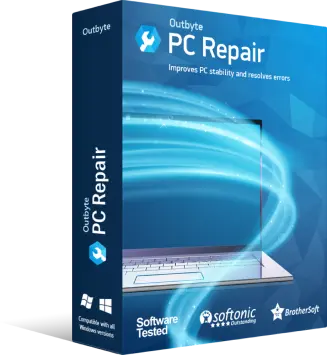Repair Utility
- File name: pc-repair-setup.exe
- Tool''s Developer: Outbyte
- Certified by: Symantec
- Download Size: 24 MB
- Downloaded: 1,143,473 times
-
Rating:

 Start Download
Start Download
Windows Operating Systems



Unlock Lightning Speed: Mastering USB 3.0 for Ultra-Fast Data Transfer
In today’s fast-paced digital world, transferring large files quickly is no longer a luxury—it’s a necessity. USB 3.0, also known as SuperSpeed USB, promises blazing-fast data transfer speeds of up to 5 Gbps, a significant leap from USB 2.0’s 480 Mbps. Yet, many users find themselves stuck with sluggish performance, wondering why their devices aren’t living up to the hype. The truth is, unlocking the full potential of USB 3.0 requires more than just plugging in a cable. Let’s explore the common pitfalls holding back your transfer speeds and how to fix them.
1. The Root Causes: Why Your USB 3.0 Isn’t Delivering Lightning Speed Incorrect Port or Cable UsageUSB 3.0 ports are typically marked with blue inserts or the “SS” (SuperSpeed) logo. If you’re plugging your device into an older USB 2.0 port (often black or white), you’ll be limited to slower speeds. Similarly, using a USB 2.0 cable—even with a USB 3.0 port—caps performance. These cables lack the additional wires needed for SuperSpeed transfers.
Outdated or Missing DriversYour operating system relies on drivers to communicate with hardware. If USB 3.0 drivers are outdated, missing, or corrupted, your system might default to USB 2.0 speeds. This is common after OS updates or when using older motherboards.
Device Compatibility IssuesNot all devices support USB 3.0. External hard drives, flash drives, or peripherals designed for USB 2.0 won’t magically gain speed when plugged into a SuperSpeed port. Always check for the USB 3.0 logo on your device.
Background Processes and File System LimitationsBackground apps consuming bandwidth (e.g., cloud sync tools, antivirus scans) can throttle transfer rates. Additionally, fragmented files on older mechanical hard drives (HDDs) slow down read/write operations. While modern solid-state drives (SSDs) aren’t affected by fragmentation, HDDs still suffer.
Power Management SettingsTo save energy, Windows and other OSes may throttle USB ports. This feature, while useful for laptops, can inadvertently limit performance during active transfers.
2. Step-by-Step Guide to Fix USB 3.0 Speed Issues Step 1: Verify Hardware Compatibility- Check the Port: Ensure your device is connected to a blue USB 3.0 port or one labeled “SS.” Consult your computer’s manual if unsure.
- Use the Right Cable: Look for cables marked “USB 3.0” or “SuperSpeed.” USB 3.0 cables have nine pins (visible as a second row of contacts) compared to USB 2.0’s four.
On Windows:
- Press Win + X and select Device Manager.
- Expand Universal Serial Bus controllers.
- Right-click entries labeled “USB 3.0” or “eXtensible Host Controller” and select Update driver.
- Choose “Search automatically for drivers” and follow prompts.
If issues persist, visit your motherboard or laptop manufacturer’s website to download the latest drivers manually.
Step 3: Optimize System Settings- Disable Power Throttling:
- In Device Manager, right-click each USB Root Hub under Universal Serial Bus controllers.
- Select Properties > Power Management.
- Uncheck Allow the computer to turn off this device to save power.
- Defragment Your Drive (HDDs Only):
- Search for “Defragment and Optimize Drives” in Windows.
- Select your HDD and click Optimize.
Before transferring files, close unnecessary programs like Dropbox, OneDrive, or torrent clients. Temporarily disable real-time antivirus scans if safe.
Step 5: Test and Validate SpeedsUse tools like CrystalDiskMark or USBDeview to benchmark transfer rates. If speeds remain low, try another USB 3.0 device to isolate the issue.
3. Conclusion: Embrace the Speed You DeserveUSB 3.0 is a game-changer for data transfer, but its performance hinges on proper setup. By ensuring hardware compatibility, updating drivers, and tweaking system settings, you can eliminate bottlenecks and achieve the ultra-fast speeds promised by SuperSpeed USB. Remember, the right cable and port are non-negotiable—never settle for guesswork. Regularly maintain your system by defragmenting HDDs and monitoring background processes, and you’ll turn tedious file transfers into a seamless experience. Don’t let outdated habits or overlooked settings hold you back. With these fixes, your USB 3.0 devices will finally operate at full throttle, saving you time and frustration. Unlock that lightning speed—it’s been there all along, waiting for you to take control.
|
Ensure seamless Bluetooth connectivity on your Windows 7 PC with the right driver. Download compatible Bluetooth drivers to fix connection issues, enable wireless device pairing (headphones, speakers, peripherals), and enhance system performance. Find reliable, secure drivers from official manufacturer websites or trusted platforms for smooth Windows 7 operation. Always verify compatibility before installation.
|
|
The HP ScanJet G3110 is a professional-grade photo film scanner offering 4800 dpi high-resolution scanning for exceptional detail and clarity. Featuring Advanced Color Restoration Technology, it revitalizes faded hues, delivering vibrant, true-to-life reproductions of slides, negatives, and printed photos.
|
|
Download the latest Epson Stylus SX130 drivers for Windows and Mac to ensure optimal printer performance, seamless connectivity, and access to new features. This guide provides secure, easy-to-follow steps for driver installation, compatibility checks, and troubleshooting to keep your device running smoothly.
|
|
VB Audio transforms your audio journey with cutting-edge technology designed for unmatched clarity and depth. Perfect for music, gaming, or streaming, it refines every frequency to professional-grade precision—ensuring immersive, vibrant sound tailored to elevate your listening experience.
|
|
Learn how to format a drive to FAT32 with this simple, comprehensive guide. Follow clear step-by-step instructions for Windows or macOS, ensuring compatibility with older devices and systems. Discover tools for larger drives and avoid data loss by backing up files before proceeding. Perfect for beginners!
|
|
Learn step-by-step methods to reinstall Bluetooth drivers on Windows 11, ensuring seamless device connectivity. Fix common issues like driver corruption, missing functionality, or connection errors by updating, rolling back, or manually reinstalling drivers via Device Manager, Windows Update, or manufacturer tools.
|
|
Mouse Manager: Take Full Control of Your Mouse Settings – Unlock precision and personalization with advanced tools to customize your mouse experience. Adjust DPI, sensitivity, button assignments, and scrolling behavior effortlessly. Perfect for gaming, design, or productivity, this utility puts you in command, ensuring every click aligns with your workflow. Elevate efficiency and comfort by tailoring your device to your unique needs.
|
|
Download the latest STK1AW32SC drivers to ensure optimal performance, compatibility, and security for your device. Access updates for enhanced functionality, bug fixes, and seamless connectivity. Visit the official support page for quick, safe downloads tailored to your system requirements.
|
|
Learn how to enable or install Bluetooth on your laptop with this step-by-step guide. Discover built-in settings for Windows and macOS, troubleshoot missing drivers, and ensure seamless device connectivity. Get tips to check hardware compatibility and quickly resolve common Bluetooth issues.
|
|
Optimize your Windows 11 64-bit audio experience with the Realtek Audio Driver, ensuring high-quality sound output, seamless compatibility, and enhanced system performance. This driver supports the latest audio enhancements, fixes, and hardware configurations, delivering crisp, clear audio for gaming, multimedia, and communication. Stay updated for improved stability and new features.
|
| See all queries |



